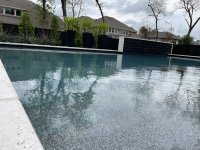that is a BOLD FACED manufacturers lie. But the PBS aren’t chemistry experts and are just advising what the brochure / trade expo said. They are also following decades old sanitation standards that haven’t kept up with the times. Imagine going to the DR like it was 1985 and being treated as such. Yeah No.
the theory is that the ozone/UV handles most of the FC loss from keeping algae at bay. So you’ll need less FC for everything else. The reality is that only .00000001 % of your water passes through the units at any given moment and you have the entire pool sitting there festering with bacteria, viruses, pathogens, and yes, even algae. So you need to fully treat the pool no matter what. And at that point, why spend good money on something that does not lower your testing/adding ?
Following the holy grail
FC/CYA Levels, the CYA will buffer your chlorine to the point that the water will be the most comfortable water you have ever been in, even for most people with sensitive skin. It’s never the chlorine, but the byproducts of the chlorine doing it’s thing (CCs) that irritates swimmers.
For feel alone, you can add salt with our without a SWG. The levels are so low (10% of seawater) that they will not harm a thing. Any water will damage poor quality materials but the salt takes the brunt of the blame. We had a member recently that converted to salt and was already 33% over the normal salt levels with a liquid chlorine dosed pool. His was the rarity but still. The average pool that is liquid chlorine based still has half the normal (low) levels of a salt pool.


